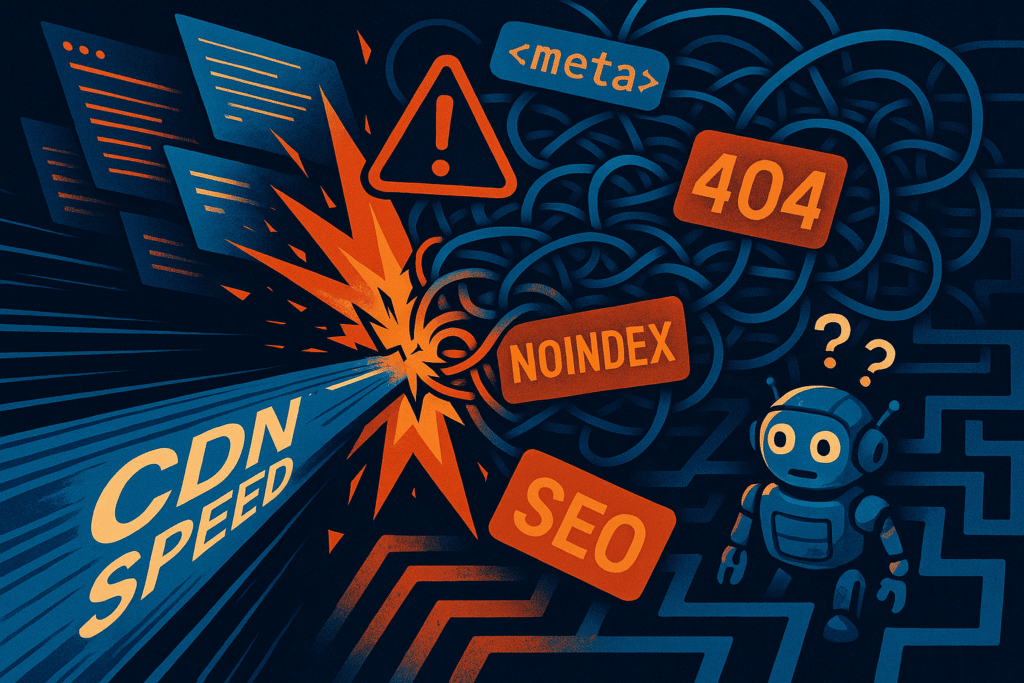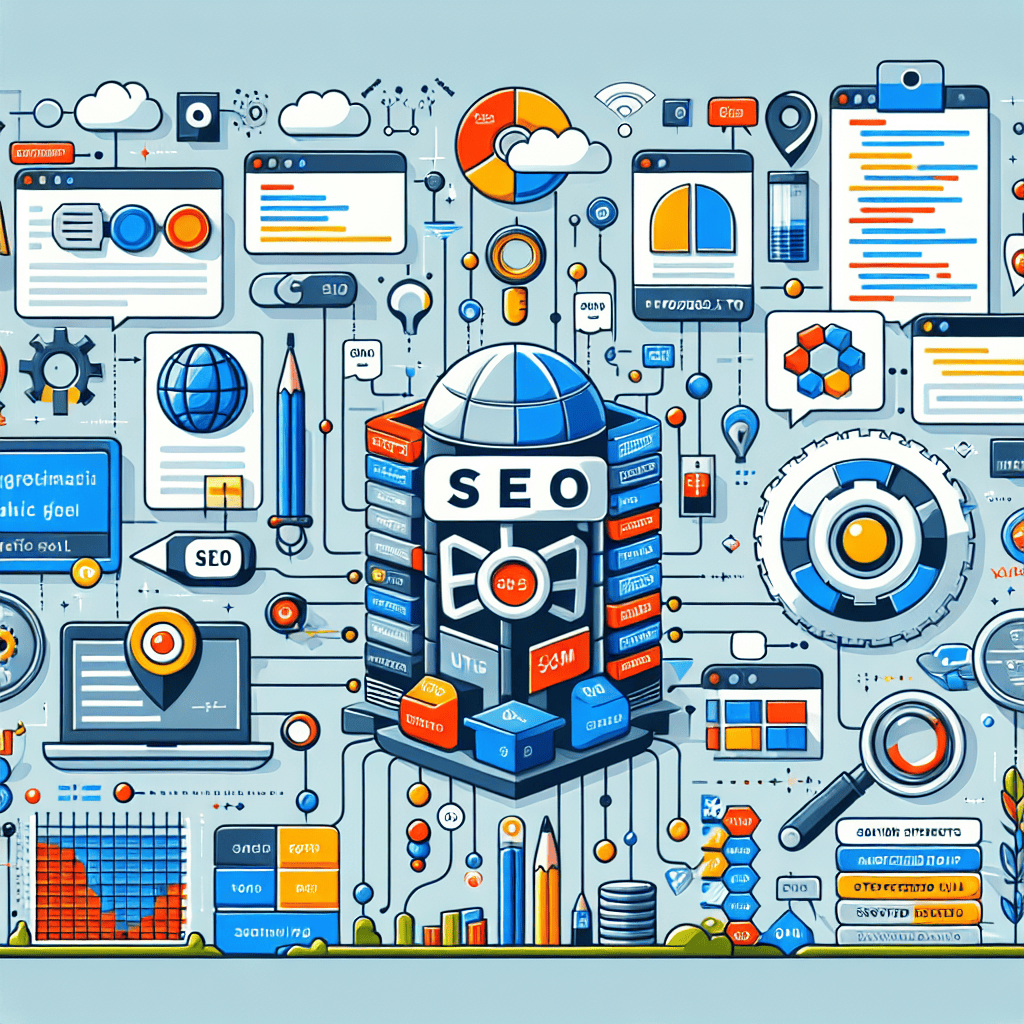We all want our websites to load faster. In the race to shave off milliseconds, many site owners turn to Content Delivery Networks (CDNs)—and for good reason. CDNs are a powerful way to boost page speed, improve user experience, and potentially get on Google’s good side.
But what happens when your speed fix starts to sabotage your search rankings?
Caching misconfigurations can lead to serious SEO problems—think outdated content being indexed, pages vanishing from search results, and mysterious ranking drops. Sounds like a nightmare? It can be, if you’re not careful.
Let’s break down why these issues happen and how to strike the perfect balance between speed and search visibility.
How CDNs Work and Why They Matter
A CDN is a global network of servers designed to deliver your website’s content from the server closest to the visitor. This means your users get lightning-fast page loads without always hitting your main server. Pretty great, right?
The magic behind the speed is caching. CDNs store a version of your site—your HTML, JavaScript, CSS, and sometimes even entire pages—and serve them when someone visits. That way, your origin server doesn’t have to work as hard.
The result? Lower load times, less bandwidth usage, and improved performance, especially for global audiences.
Now, here’s the catch…
When Speed Becomes a Problem
Caching is efficient—but not always smart. Unless configured correctly, CDNs may serve stale or incorrect content to both users and search engines. And while your visitors might not notice right away, Google definitely will.
Here are a few common ways this can mess with your SEO:
- Outdated metadata gets indexed: If your CDN is caching the HTML of your pages for too long, search engines might see old meta titles, descriptions, or canonical tags—even after you’ve updated them.
- “Noindex” pages remain cached: Temporary
noindextags used during development or testing might get cached and served to Googlebot long after you’ve removed them from your live site. - Robots.txt file doesn’t update: This little file tells search engines where they can and can’t go. If the CDN caches an old version, Google could be locked out from indexing key areas of your site.
Each of these issues can quietly tank your rankings without any obvious sign something’s wrong.
One Case That Says It All
Here’s a real-world example to paint the picture: A blog updated its homepage to remove a “noindex” tag after relaunching. Everything looked perfect to users. But two weeks later, it still wasn’t showing up in search results.
Turns out, the CDN was caching the old version of the page, including that pesky noindex tag. Googlebot kept seeing the old instruction and—obediently—kept ignoring the page.
A simple cache purge fixed the issue. But not before traffic took a serious dip.
Spotting the Warning Signs
Caching issues often fly under the radar. Your site might load perfectly, your content might look fine, but your SEO metrics start to slip—and you can’t figure out why.
Here’s how to stay ahead of the problem:
- Use Google Search Console’s URL Inspection Tool to check how Google sees your pages.
- Look at the cached version of a page in Google by typing
cache:yoururl.comin the search bar. Is it showing the right version? - Use developer tools or a browser extension to inspect Cache-Control headers. These tell crawlers how long to store the page before re-fetching it.
Don’t just assume things are fine because they look fine.
The Right Way to Configure CDN Caching for SEO
Balancing speed and SEO doesn’t have to be a tug-of-war. You just need the right strategy.
Here’s what works:
- Avoid caching dynamic content: Pages with constantly changing metadata, canonical tags, or
hreflangattributes should either not be cached or have very short cache lifespans. - Always purge the cache after major content updates: If you’ve updated meta tags, changed titles, or added structured data, make it a habit to manually purge or trigger an automatic cache refresh.
You should also keep an eye on how long your cache lives. Setting overly long expiry times might save a few milliseconds—but can cost you days of bad indexing.
Make the CDN Work With Your SEO, Not Against It
Your CDN and SEO efforts should be part of the same strategy—not at war with each other.
It helps to:
- Collaborate with your dev team when applying new cache rules.
- Keep a log of when content changes go live and when caches are purged.
- Schedule regular checks of critical pages to make sure they’re being crawled and indexed correctly.
In more complex cases, consider working with your CDN provider directly. Many platforms like Cloudflare and Fastly have options to fine-tune cache rules for SEO needs—you just have to ask.
Wrapping It All Up
CDNs are incredible tools. They make websites faster, smoother, and more scalable. But if you set them and forget them, they can turn into an SEO liability.
The good news? With just a bit of proactive effort, you can enjoy the speed of a CDN without sacrificing your search rankings.
Start by reviewing your cache rules. Check what content is being cached and how long it sticks around. And if you’re ever unsure what Google is seeing—ask it directly via Search Console.
Need help keeping your SEO performance clean, lean, and free from caching conflicts? Visit SEO Sets to explore smarter SEO tools that help you stay in control, even when things get technical.
FAQs
1. Why is my updated meta description not showing in Google search?
If your CDN is caching an older version of your page, Google might still be indexing that instead of your latest update. Always purge the cache after updating metadata.
2. Should I cache robots.txt or sitemap.xml files?
No. These files are critical for SEO and should always serve the most current version to search engines.
3. How often should I purge the CDN cache?
Whenever you make SEO-related changes—new titles, updated tags, redirects, or content updates—it’s smart to trigger a cache purge to ensure crawlers get the latest version.
4. Can CDN caching cause duplicate content issues?
Yes. If multiple versions of a page (like with query strings or device-specific content) are cached and indexed without proper canonicalization, it can lead to duplicate content penalties.
5. How can I prevent caching from hurting my SEO long-term?
Review your cache policies regularly, avoid caching dynamic or SEO-sensitive elements, and use tools like Search Console and Screaming Frog to verify what Google sees.


